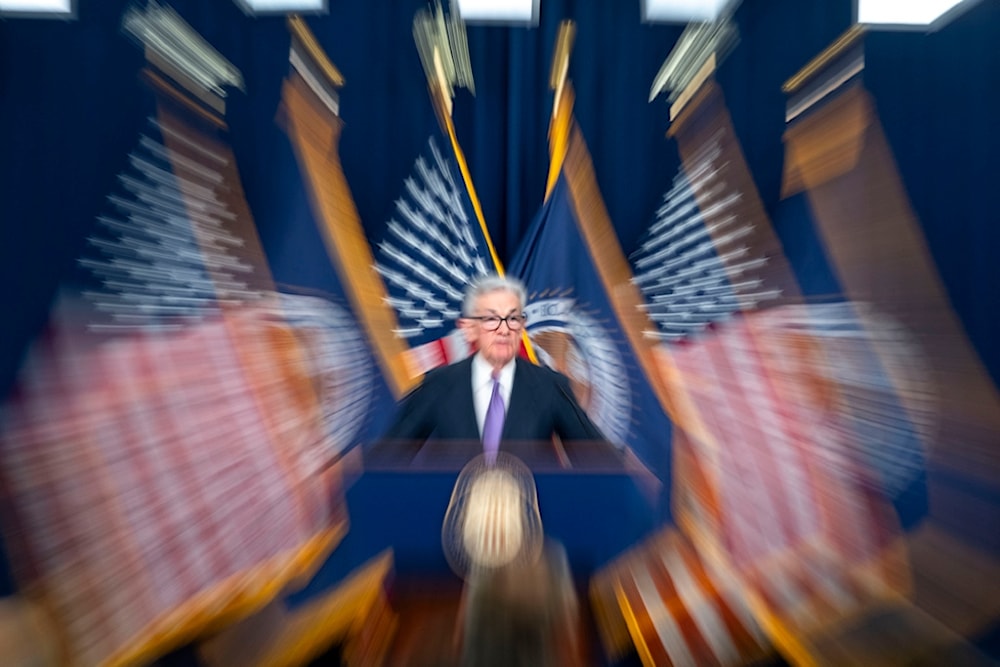Pessimism grows for USD as Fed signals rate cut, Euro strengthens
Given the slowdown in the US economy, anticipated changes in Fed policies have weakened the dollar compared to central banks with more favorable rates.
-

In this photo made with a slow shutter speed, Federal Reserve Board Chair Jerome Powell speaks during a news conference on December 13, 2023, in Washington. (AP)
The Federal Reserve's signals of a potential interest rate cut have fueled growing pessimism about the dollar, driven by expectations of the Fed's response to the US economic slowdown.
The dollar's poor performance in 2023, its worst since the pandemic, has led many on Wall Street to anticipate a potential interest rate cut in 2024.
Given the slowdown in the US economy, anticipated changes in Fed policies have weakened the dollar compared to central banks with more favorable rates.
Read more: US economy uncertain amid growth, inflation concerns: Powell
Swaps traders are predicting a substantial interest rate reduction by the Federal Reserve, potentially reaching 1.5 percent, surpassing earlier forecasts.
Recent indications from the Fed hinting at a pause in its tightening strategies have strengthened the inclination to bet against the dollar. The latest data from the Commodity Futures Trading Commission shows a surge in bearish sentiment towards the greenback among non-commercial traders, including hedge funds and asset managers.
There has also been an increase of over 10,000 contracts, totaling more than 39,000, associated with expectations of a decline in the US dollar, particularly following the Federal Reserve's meeting.
As the Federal Reserve proceeds cautiously, officials at the European Central Bank have avoided forecasting imminent rate cuts. As a result, the euro gained strength by about three percent against the dollar this year, indicating the possibility of the dollar experiencing its first annual decline in three years.
Read more: Geopolitical tensions risk for world economy, US inflation 'too high'
Oil deals struck far from the dollar
ِEarlier today, the head of Global Commodities at JP Morgan, Natasha Kaneva, told The Wall Street Journal that giant oil conglomerates and exporters of natural oil are sealing deals away from the US dollar.
"The US dollar is getting some competition in commodities markets," remarked Kaneva, noting that 20% of the oil shares are being traded in currencies other than the US dollar.
Other major commodity-selling nations, like Brazil, UAE, and Saudi Arabia, have also contemplated groundwork that does not rely on the US dollar.
JP Morgan data showed that in 2023, 12 major trade deals were struck in currencies other than the US dollar, compared to 2022's seven. In 2015 through 2021, on the other hand, only 2 deals were made in non-dominant currencies.
This is exclusive to physical commodity deals and does not entail trading in financial markets. This year, non-dollar contracts were reportedly settled by sellers in Russia, with just one case registered in the UAE.
Read more: Iran, Russia to scrap USD in bilateral trade for national currencies

 3 Min Read
3 Min Read








